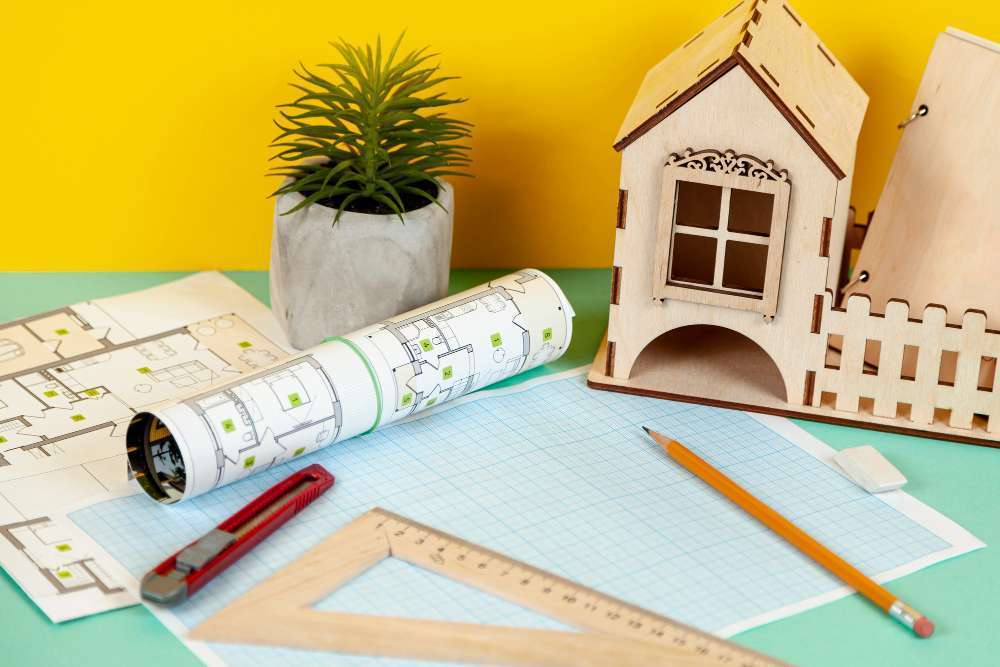In today’s dynamic and evolving world, the field of architecture and design fundamentals offers an exciting and rewarding career path for aspiring professionals. From shaping skylines to creating functional spaces, architects and designers play a pivotal role in shaping the built environment around us. In this comprehensive review, we delve into the myriad benefits and opportunities awaiting those considering a career in architecture and design fundamentals.

Job Market Trends
The job market for architecture and design fundamentals is witnessing robust growth, driven by urbanization, infrastructure development, and increasing demand for sustainable design solutions. According to industry reports, the demand for architects, interior designers, and urban planners is expected to grow by [X%] over the next decade. Industries such as real estate, construction, and urban development are actively seeking skilled professionals with expertise in design principles and architectural innovation.
Education and Training Requirements
Embarking on a career in architecture and design fundamentals typically requires a bachelor’s or master’s degree in architecture, interior design, or a related field. Additionally, aspiring professionals may pursue licensure or certification through professional organizations such as the American Institute of Architects (AIA) or the National Council for Interior Design Qualification (NCIDQ). Hands-on experience through internships or apprenticeships is also essential for honing practical skills and building a portfolio of work.
Salary and Benefits
The remuneration for professionals in architecture and design fundamentals varies depending on factors such as experience, specialization, and location. On average, architects and designers command salaries ranging from [X] to [X] per year, with opportunities for bonuses, profit-sharing, and other incentives. Moreover, many employers offer attractive benefits packages, including health insurance, retirement plans, and professional development opportunities, further enhancing the overall compensation package.
Work-Life Balance
Contrary to common misconceptions, professionals in architecture and design fundamentals enjoy a favorable work-life balance, with opportunities for flexible work arrangements and project-based scheduling. While the nature of the work may involve occasional long hours and tight deadlines, many firms prioritize employee well-being and offer perks such as remote work options, flexible hours, and generous vacation policies. Additionally, the collaborative nature of the profession fosters a supportive and inclusive work environment conducive to work-life harmony.
Job Stability
The demand for skilled professionals in architecture and design fundamentals remains resilient amidst economic fluctuations and industry disruptions. As cities grow, infrastructure ages, and sustainability becomes a top priority, the need for architects and designers to envision and execute innovative solutions will only intensify. Furthermore, the interdisciplinary nature of the field equips professionals with transferable skills that remain in demand across various sectors, ensuring long-term job stability and career growth opportunities.
Networking Opportunities
Networking plays a crucial role in advancing one’s career in architecture and design fundamentals, offering opportunities for learning, collaboration, and professional growth. Engaging with industry peers, participating in professional organizations, and attending conferences and trade shows can facilitate meaningful connections and open doors to new career opportunities. Moreover, networking enables professionals to stay abreast of the latest trends, technologies, and job openings in the field, positioning them for success in a competitive job market.
Industry Specifics
Architecture and design fundamentals find applications across a diverse array of industries, each presenting unique opportunities and challenges for professionals in the field. From residential and commercial projects to institutional and public infrastructure, architects and designers contribute to the creation of functional, aesthetically pleasing spaces that enhance quality of life and promote sustainability. Moreover, the emergence of trends such as green building, adaptive reuse, and smart cities is reshaping the industry landscape, offering new avenues for innovation and creativity.
Skills Gap Analysis
While the demand for professionals in architecture and design fundamentals is strong, there exists a significant skills gap that poses challenges for employers and job seekers alike. Employers often struggle to find candidates with the requisite skills and expertise to fill critical roles, leading to talent shortages and prolonged recruitment cycles. Conversely, aspiring professionals face the challenge of acquiring specialized skills and staying abreast of emerging trends and technologies. Bridging the skills gap requires collaboration between academia, industry, and professional organizations to develop comprehensive training programs, promote lifelong learning, and foster a culture of innovation and excellence.
Future Trends and Technology
The future of architecture and design fundamentals is shaped by advancements in technology, sustainability practices, and user-centric design principles. Emerging trends such as Building Information Modeling (BIM), parametric design, and virtual reality (VR) are revolutionizing the way architects and designers conceptualize, communicate, and execute their ideas. Moreover, the growing emphasis on sustainable design, resilience planning, and inclusive architecture is driving innovation and pushing the boundaries of creativity. By embracing these trends and leveraging cutting-edge technologies, professionals can stay ahead of the curve and create meaningful impact in the built environment.
Risk Assessment
While the prospects for a career in architecture and design fundamentals are promising, it is essential for aspiring professionals to conduct a thorough risk assessment and understand the potential challenges and opportunities associated with the field. Risks such as economic downturns, project delays, and regulatory changes can impact job stability and career progression. However, by diversifying skills, staying adaptable, and embracing lifelong learning, professionals can mitigate risks and navigate the complexities of the industry with confidence.
Additional Resources:
- Unlocking the Future: A Career in 3D Printing Applications in Product Design
- Unlocking Your Potential: Exploring Career Opportunities in Personal Development and Self-Improvement
- Master Your Wealth: Exploring Careers in Personal Finance and Investment
- Building Wealth, Building Futures: Exploring Careers in Personal Finance and Wealth Management
- Navigating the Cosmos: Exploring Careers in Planetary Science and Exploration
- Shaping the Future: A Career in Education
- Behind the Scenes: A Career in Film Studies
- Mastering Money: A Career in Financial Literacy and Money Management
- Streamlining Success: The Advantages of Pursuing a Course in Industrial Automation
- Introduction to Accounting Principles
Table of Contents
Categories:
Latest Posts:
FAQ’s
Q: What are the key skills required for success in architecture and design fundamentals?
A: Key skills for professionals in architecture and design fundamentals include creativity, technical proficiency, problem-solving ability, communication skills, and project management expertise.
Q: How can I enhance my employability in the field of architecture and design fundamentals?
A: To enhance employability, aspiring professionals should focus on building a strong portfolio, gaining practical experience through internships or apprenticeships, staying abreast of emerging trends and technologies, and networking with industry peers and professionals.
Q: What are some emerging trends shaping the future of architecture and design fundamentals?
A: Emerging trends shaping the future of architecture and design fundamentals include Building Information Modeling (BIM), parametric design, sustainable design practices, resilience planning, and user-centric design principles.
4. What are the main responsibilities of an architect?
Architects are responsible for conceptualizing and designing buildings, preparing detailed drawings and plans, coordinating with engineers and contractors, ensuring compliance with safety and zoning regulations, and overseeing construction projects to completion.
5. How can one gain practical experience in the field?
Gaining practical experience can involve internships, apprenticeships, and entry-level positions at architectural firms. Participating in design competitions, workshops, and collaborating on real-world projects during education also provides valuable hands-on experience.
6. What are some emerging trends in architecture and design?
Emerging trends include sustainable and green building practices, smart technology integration, adaptive reuse of existing structures, and an increasing focus on user-centric and inclusive design.
